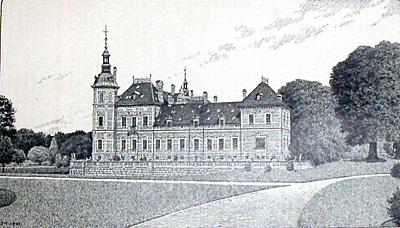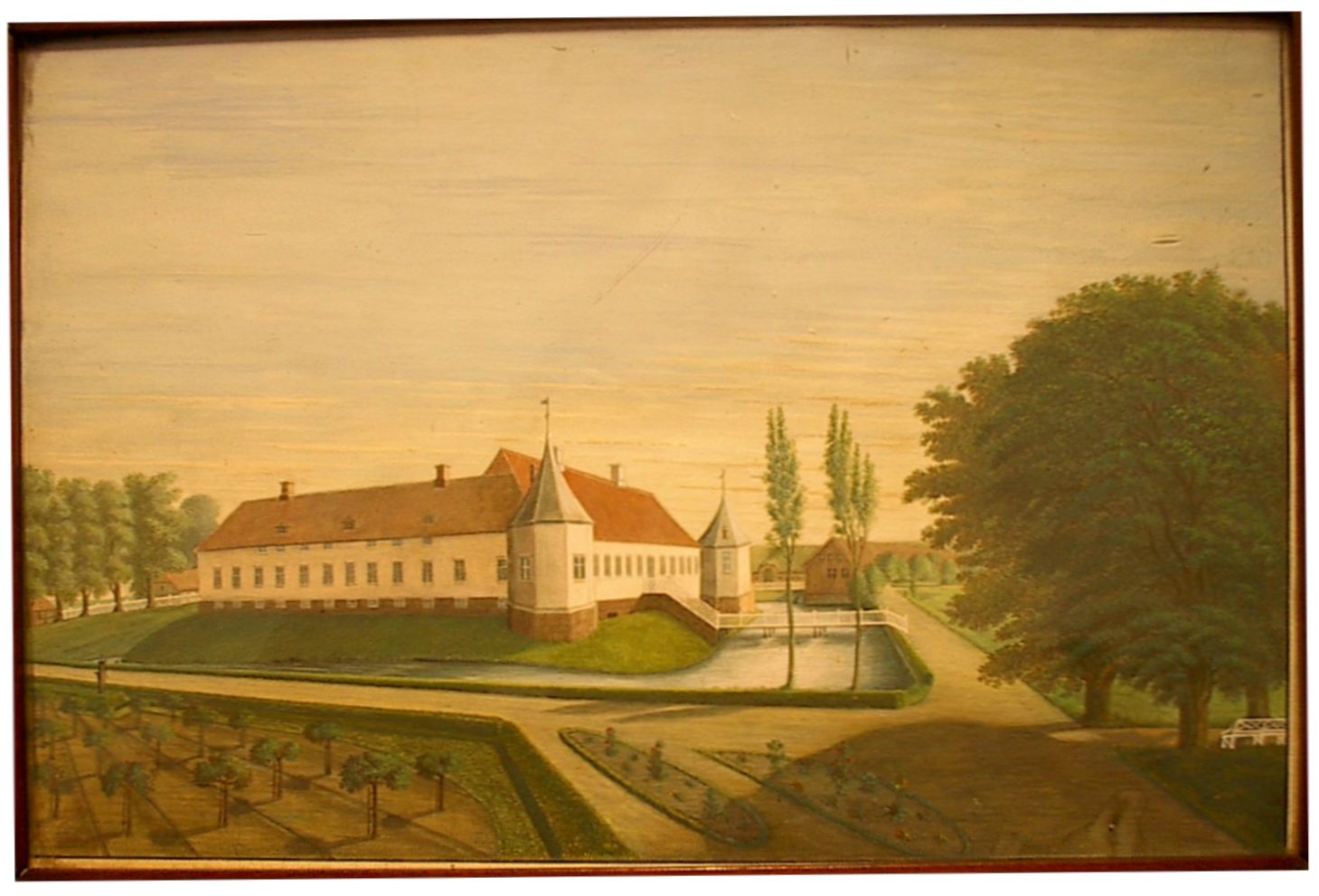Frijsenborg on:
[Wikipedia]
[Google]
[Amazon]

 Frijsenborg is a manor house and estate near
Frijsenborg is a manor house and estate near
 The property stands on the site of the former village of Jernit which had existed since the 15th century. In 1558, King
The property stands on the site of the former village of Jernit which had existed since the 15th century. In 1558, King

 Frijsenborg is a manor house and estate near
Frijsenborg is a manor house and estate near Hammel
Hammel is a town in central Denmark with a population of 6,854 (1 January 2022),Aarhus
Aarhus (, , ; officially spelled Århus from 1948 until 1 January 2011) is the second-largest city in Denmark and the seat of Aarhus Municipality. It is located on the eastern shore of Jutland in the Kattegat sea and approximately northwest ...
in Jutland
Jutland ( da, Jylland ; german: Jütland ; ang, Ēota land ), known anciently as the Cimbric or Cimbrian Peninsula ( la, Cimbricus Chersonesus; da, den Kimbriske Halvø, links=no or ; german: Kimbrische Halbinsel, links=no), is a peninsula of ...
, Denmark. The first manor on the site known as Jernit was built by Valdemar Parberg in 1583. After the statesman Mogens Friis acquired the property in 1672, the manor was rebuilt at the end of the 17th century. In the 1860s, it was considerably expanded and redesigned in the Renaissance style
Renaissance architecture is the European architecture of the period between the early 15th and early 16th centuries in different regions, demonstrating a conscious revival and development of certain elements of Ancient Greece, ancient Greek and ...
.
History and architecture
 The property stands on the site of the former village of Jernit which had existed since the 15th century. In 1558, King
The property stands on the site of the former village of Jernit which had existed since the 15th century. In 1558, King Christian III
Christian III (12 August 1503 – 1 January 1559) reigned as King of Denmark from 1534 and King of Norway from 1537 until his death in 1559. During his reign, Christian formed close ties between the church and the crown. He established ...
gave orders for Jernit Parish to be combined with Hammel Parish which required Jernit Church to be demolished. In 1583, the king transferred ownership of the village to the nobleman Valdemar Parsberg who demolished all its buildings. In their place, he constructed a Baroque
The Baroque (, ; ) is a style of architecture, music, dance, painting, sculpture, poetry, and other arts that flourished in Europe from the early 17th century until the 1750s. In the territories of the Spanish and Portuguese empires including t ...
manor surrounded by a moat which he called Jernit.
The Danish county of Frijsenborg consisting of Jernit, Tulstrup, Lyngballegård, Hagshom and Østergård, was established in 1672 by the Crown for Mogens Friis (1623–1675) a high-ranking statesman, in order to compensate him for losses he had incurred in the Dano-Swedish War (1658–60)
Dano-Swedish War may refer to one of multiple wars which took place between the Kingdom of Sweden and the Kingdom of Denmark (from 1450 in personal union with the Kingdom of Norway) up to 1814:
List of wars Legendary wars between Denmark a ...
.
The county became one of the largest in Denmark, covering an area of . Friis renamed the manor house Frijsenborg.
Renaissance renovation
CountChristian Emil Krag-Juel-Vind-Frijs
Christian Emil Krag-Juel-Vind-Frijs (8 December 1817 – 12 October 1896) was a Danish nobleman and politician. He was Council President of Denmark from 1865 to 1870 as the leader of the Frijs Cabinet.
Biography
Frijs graduated from Sorø Acade ...
, who acquired the estate in 1849, commissioned the architect Ferdinand Meldahl
Ferdinand Meldahl (16 March 1827 – 3 February 1908) was a Danish architect best known for the reconstruction of Frederiksborg Castle after the fire in 1859. Meldahl was one of the leading proponents of historicism in Denmark.
Biography
He was ...
(1827–1908) to redesign, modernize and expand the building into a luxurious manor house in the Renaissance style. Three new wings were added as well as tall steepled towers although the walls of the original ground floor were maintained. A new storey was added to the west wing while two-storied pavilions were built on the south and north wings. The work was completed in 1867. Today's building is considered to be one of the finest examples of Renaissance Revival architecture
Renaissance Revival architecture (sometimes referred to as "Neo-Renaissance") is a group of 19th century architectural revival styles which were neither Greek Revival nor Gothic Revival but which instead drew inspiration from a wide range o ...
in Denmark.
In 1880, the count's son Mogens returned from England, bringing with him experience of the English nobility's lifestyle which he applied to the manor, fitting it our with palatial furnishings and decorations. Since 1982, the property has been owned by Bendt Tido Hannibal Wedell.
The building can be seen from the road but is not open to the public.
References
{{Denmark castles and manor houses Houses completed in 1580 Listed buildings and structures in Favrskov Municipality Listed castles and manor houses in Denmark Renaissance Revival architecture in Denmark Buildings and structures associated with the Friis family